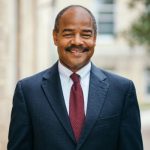Author: Molly Harris. Editor: Laura Schmidli.
Published on September 8, 2025.
You may have heard a college student refer to their experiences outside the classroom as “real life.” How can we dispel the impression that what happens in the classroom is somehow disconnected from students’ lives? How can we make our courses more “real” to students? And how might this infusion of “real life” into the classroom motivate student learning and engagement? Read on for small changes that can make your assignments more authentic and encourage student motivation and learning.

What’s effective?
Relevance and authenticity are necessary for recruiting students’ intrinsic motivation. Research has shown that there are multiple kinds of authenticity that can be associated with a classroom assignment or experience, such as authentic contexts, tasks, impacts, and values, and that these different types of authenticity can all benefit student learning (Strobel et al., 2013).
1. Define a New Audience
Defining a new audience for an existing assignment can be an approachable way to make student learning feel more authentic and relevant.
Define Public Audiences
For some assignments, a public audience might make sense. Producing work that will be seen, heard, or read by the public can motivate students to create a meaningful product and increase student engagement in course material (Lovett et al., 2023). Examples of such assignments include writing or editing a Wikipedia page, creating a social media campaign, or recording a podcast episode.
In one social work course in which students produced a public podcast, researchers found that the assignment contributed to students’ achieving the desired learning outcomes and was perceived as effective by students (Hitchcock et al., 2021). In addition, a 2019 review found that assignments in which students engaged as Wikipedia contributors increased student motivation and promoted learning of course material (Vetter, McDowell, & Stewart). Hamilton and Han (2024), who studied the incorporation of Wikipedia and Twitter assignments into educational policy courses, found that these assignments work best when an audience is able to contribute meaningfully back to the student and when an instructor has a belief that learning can be constructed communally.
An instructor should consider the purpose of their assignment, the potential risks and rewards for students who create public content, and their own pedagogy before incorporating a public audience into an assignment. If students will be publicly sharing coursework, consider how they could use pseudonyms to preserve their privacy. Instructors and students should also explore Creative Commons licensing, and consider the possibility that generative AI chatbots may consume public information.
Ask Students to Define Personal Audiences
For other assignments, a personal connection between the student and the audience can foster motivation and engagement. When students in a first-year Latin course wrote letters in Latin to a recipient of their choice, this real-life communication assignment was found to effectively engage students in learning new grammatical concepts, while also enabling their personal expression, with many students choosing to actually send their letter (Dugdale, 2011).
One readily available and personally meaningful audience for student work is the campus community. In one public speaking course, the instructor arranged for students to perform readings in spaces on campus in front of student, faculty, and staff audiences, finding that students expressed greater confidence and stronger ability to give and receive feedback after these experiences than they did in a traditional classroom setting (Emel, 2018). Consider how you might connect to existing campus events to provide immediately relevant context.
Scaffold Skills for New Audiences and Media
Writing or speaking for an authentic audience, instead of an instructor audience, may require students to think and communicate in new ways. For students to successfully produce this kind of work, they will need to develop skills over time. Instructors can support this development by scaffolding assignments with opportunities to practice new ways of thinking and communicating.
Consider scaffolding student learning around both the form and content of their work. For example, research from McDowell and Vetter (2022) suggests that effective scaffolding steps for writing a Wikipedia article might include analyzing existing Wikipedia articles, annotating and summarizing research with Wikipedia’s readers in mind, and responding to feedback from Wikipedia readers.
In another example, in which instructors converted a research paper into a podcasting assignment, students first listened to and evaluated existing podcasts based on a rubric, then engaged in lessons around storytelling and professional self-representation, and then practiced technological skills like incorporating music before drafting their own podcast episode plans (Hitchcock et al., 2021).
Guiding Questions
- What are the potential risks and rewards for students sharing their work publicly in your disciplinary context? How can you mitigate risks?
- What events are happening in the community, on campus, or in your department where your students could contribute their voices?
L&S Instructor Example: Communicating in a new genre
 Lyn van Swol, Professor in the Department of Communication Arts
Lyn van Swol, Professor in the Department of Communication Arts
What do you do? I have students develop a persuasion campaign around a pro-social issue, like encouraging people to consume less sugar, engage in environmentally friendly behaviors like buying second-hand clothing, or increasing awareness of PFAS chemicals in consumer products.
Why do you do it? By designing a campaign, the students have to learn how to take a persuasive theory or concept from the class and imagine how it would be implemented to reach real people to change behavior. We start small by everyone using the same concept to apply to their campaign and then receiving feedback. By the end of class, the students can choose which theories fit best with their campaign.
What impact does it have on student learning? Students realize they now have the skills to think critically about persuasion and decide which concepts could help them to persuade others to improve their lives. They also realize that persuasion is based on scientific research and can be learned and developed.
What might you change in the future? I often change the focus of the campaign based on student interests or my current research.
L&S Instructor Example: Scaffolding assignments for authentic audiences

Eric Wilcots, Dean of the College of Letters and Science and Mary C. Jacoby Professor of Astronomy in the Department of Astronomy
What do you do? In my Astronomy course “History of Matter in the Universe,” I asked students to create a short podcast episode. This assignment took place over the course of the semester with multiple steps, including an in-class brainstorming session, an evaluation of existing science podcasts, initial blog post writing assignments, 30-second “pitches,” practice with podcasting tools, and creating a 1-2 minute pilot. In class, we discussed why science communication matters and how we might approach different audiences.
Why do you do it? The science we’re learning is relevant to many real-world issues that students care about. I want students to feel excited about how their learning might contribute to solving pressing problems and also feel comfortable sharing their knowledge and ideas with diverse audiences. I have the final podcast assignment build on earlier assignments and class discussions so that students can refine their ideas and develop their own style of communicating effectively in different media.
What impact does it have on student learning? Students are motivated by the chance to dig deeper into an issue that interests them. They’re not just memorizing facts about the universe but also considering why these matter and what questions are still unanswered. Between the first and final assignment, I see students grow from passive observers to confident contributors within the scientific community. They develop their ability to communicate complex information in concise and approachable ways. It is one of the greatest joys of teaching to see students applying content in new and creative ways.
What might you change in the future? I’m curious about how new technologies and artificial intelligence are changing the ways we communicate about science. If I were to teach this class in the future, I’d love to explore ways to incorporate emerging technologies as authentic ways for students to communicate.
2. Use Role-Play and Simulations
Asking students to take on specific roles within assignments and engage in realistic scenarios can provide them opportunities to practice relevant skills within your discipline.
Incorporate Role-Play
Role-play can provide students with authentic tasks, giving students confidence in taking on a particular disciplinary role and motivating them to meet learning outcomes. For example, in one political science course, researchers found that over the course of a four-day model UN simulation, students progressed toward the learning outcome of developing self-efficacy for negotiating in political settings (Duchatelet et al., 2021). Role-play can also offer a safer environment than the workplace for students to try out new skills, as well as a more flexible space for students to explore related ideas and questions that they are interested in (Kettula & Berghäll, 2013).
Crafting an effective role-play experience involves thoughtful design. Duchalet et al. (2021) emphasize that creating a social environment in which students are familiar with each other and feel supported by each other contributes positively toward the effectiveness of a role-play simulation. Rao and Stupans (2012) identify multiple models for enacting a role-play, each with their own benefits and guidelines, escalating from students “knowing” by switching roles and inhabiting a different point of view, to students “showing/knowing how” by acting out a scenario, to students “doing” by engaging in real examples from their own experiences.
Research has shown that simulations, including role-play, can be effectively incorporated even at early points within a course or program, as long as students are able to apply their prior knowledge and are provided enough support. Providing examples and prompts is an effective form of support for learners with lower prior knowledge, whereas opportunities for reflection provides greater support to learners with higher prior knowledge (Chernikova et al., 2020).
Balance Authentic Scenarios with Student Support
Instructors can control and simplify their simulation environment to more appropriately challenge students. Examples include providing supplemental information to students and drawing student attention to specific tasks throughout the simulation, even if these supports are not realistic to the scenario. Such strategies have been shown to increase student learning, especially for students with lower prior knowledge (Chernikova et al., 2024).
During a simulation, an instructor may act as a facilitator more than a lecturer, and their facilitation decisions can impact the success of the simulation. One study recommends that instructors should protect students emotionally while challenging them cognitively, for example by pacing the learning process to begin with simpler, low-stakes activities or by providing encouragement along with constructive critique (Levin, Hemi, & Kasperski, 2025).
Consider the resources, including time and technology, that you have available to ensure that you are able to provide enough support to students while also preserving your own wellbeing. Although simulations with a high authenticity (i.e., a strong resemblance to reality) can help students learn complex skills more effectively than simulations with a low authenticity, researchers have found that simulations with low authenticity still contribute positively to student learning and that including just one object or process with high authenticity can achieve effects similar to a highly authentic simulation (Chernikova et al., 2020). A small-scale addition or change to your course is worthwhile.
L&S Instructor Example: Simulation for disciplinary skills
 Eleanor Powell, Associate Professor in the Department of Political Science
Eleanor Powell, Associate Professor in the Department of Political Science
What do you do? For my lecture course on the United States Congress, I created a semester-long simulation project. Each student is assigned two roles of real current Members of the House of Representatives – one Democratic Member and one Republican Member. Each week the students engage in two simulation activities (in lecture, section, or homework depending on the week) during which they play the roles of their members. These activities range from researching things about their members, to designing & filming a campaign commercial, to writing and debating legislation. The semester culminates in a series of debates and votes on the legislation they created.
Why do you do it? There were three motivating factors behind this design. First, I wanted to create a participatory format that would get the students engaged and facilitate understanding of the difficult challenges facing legislators. Second, I wanted to encourage cross-partisan perspective-taking and create a safe space for debate. Because every student plays both a Democrat and Republican, no one knows the personal views of any student. Everyone plays a legislator who is distant from their personal views and spends some time attempting to understand that perspective. And third, the nature of the participatory simulation encourages authentic learning and engagement and discourages AI-based short-cuts that inhibit learning.
What impact does it have on student learning? The students were much more engaged, and they really learned a lot about their individual legislators, the legislative process, and the challenges facing both individual legislators and the legislative branch. The simulation activities also gave students a lot of opportunities to practice a range of useful career skills – public speaking, group work, debate, negotiation, consensus building, problem-solving, analysis, spreadsheets, and so much more.
What might you change in the future? I’d love to have some real Members of Congress or congressional staff come talk to the students about their experiences.
Guiding Questions
- What skills, tasks, or ways of thinking within your discipline could students practice through simulation or role-play?
- How might you create an environment in which students are comfortable and knowledgeable enough to authentically engage in a simulation or role-play?
3. Connect to Future Careers
Helping students connect coursework to skills they’ll need in the future and envision multiple future careers can make your course feel more relevant and authentic.
Highlight Career-Related Skills
A 2022 white paper produced by the Workforce Relevance of Liberal Arts Education Roundtable Series suggests that “highlight[ing the] workforce relevance of skills imparted by existing curriculum” and “help[ing] students think about workforce relevance from the beginning” are two keys to keep the liberal arts education relevant. One step toward accomplishing this within the classroom is to uncover student expectations and make your own expectations transparent. Many students see higher education as a single path to employability, while many instructors do not view their course as a step within that single pathway (Lock & Kelly, 2022). Understanding your students’ perspectives and your own can help you present your course content in ways that help students understand why it matters.
Furthermore, even when students recognize that they are learning in a course, they often don’t know how that learning translates to the skills employers are seeking (Gregory & Konuka, 2024; Hemmy & Mehta, 2021). Within existing assignments, activities, and assessments, instructors can make explicit both how the activity meets content learning outcomes and how the skills that students are practicing may be applicable in a professional context. Consider the What You Can Do With Your Major webpages from L&S SuccessWorks, which connect each discipline within L&S to the top skills desired by employers, to help you highlight these connections for students within your course.
Provide Opportunities for Career Development
Students desire more opportunities for career development–such as learning about the job search, interviewing, and resumes–within their courses, even when career services are available on campus (Gregory & Konuka, 2024). For example, one instructor has found success both explaining to students how a specific assignment develops their professional skills and also providing language to students that can help them convey their experience in class to future employers (Markos, 2021).
Career development within courses can open up doors to students that they might otherwise not recognize. In one course that included a career placement module, students were able to consider their career identity and perceive multiple possible career paths, rather than focusing on one specific job (Benton, 2015). Instructor communications can also encourage students to explore new career paths. For example, conveying a growth-mindset to students can help them see more possibilities for a future in math and science (O’Keefe et al., 2023).
Furthermore, instructors can play a positive role in shaping students’ own narrative of employability. Research at a liberal arts college similar to L&S found that students develop a narrative of their own employability that includes 4 stages: 1) exploring possibilities and self-awareness, 2) packaging a coherent set of interests and skills, 3) distinguishing their identity from others, and 4) negotiating the stigma of liberal arts in the employability context (Nicholas, 2018). One potential practice to help students develop their narrative is to guide students through self-reflection that connects course content with professional themes (Nicholas, 2018).
![]() Tip: You might consider how a career-focused assignment could help your students meet your existing learning outcomes. SuccessWorks, the career center for L&S students, provides Resources for Faculty & Staff who are looking to integrate career development into academic coursework in ways that complement existing course content. These resources include assignments, presentations, Canvas modules, and syllabus language.
Tip: You might consider how a career-focused assignment could help your students meet your existing learning outcomes. SuccessWorks, the career center for L&S students, provides Resources for Faculty & Staff who are looking to integrate career development into academic coursework in ways that complement existing course content. These resources include assignments, presentations, Canvas modules, and syllabus language.
Guiding Questions
- What skills and ways of thinking do you most value? What skills and ways of thinking do you think students most value?
- How might you communicate transparently with students the value of the skills they are learning?
L&S Instructor Example: Seeing the discipline in action
 Chelsea Andrews, Lecturer in the Department of Psychology
Chelsea Andrews, Lecturer in the Department of Psychology
What do you do? I coordinate a classroom collaboration between my honors-level Introduction to Psychology course and the University of Wisconsin Police Department K9 Unit. During this activity, K9 handlers and their dogs—ranging from therapy dogs to multi-purpose K9s—visit the classroom to showcase how psychological learning principles are applied in real-world training scenarios. During the visit, students have the opportunity to ask questions while thinking critically about how what they are learning in class can be applied to the training of K9s for various tasks and jobs.
Why do you do it? This activity brings textbook and lecture concepts to life. By spending time with the K9s and their handlers, students can see how classical and operant conditioning theories are not just abstract ideas, but are tools used in real, impactful work. It helps bridge the gap between academic content and practical application in a way that’s memorable and engaging.
What impact does it have on student learning? Students consistently report that this is one of the most meaningful and memorable parts of the course. It deepens their understanding of psychological theories, increases engagement, and helps them appreciate the relevance of psychology in areas such as law enforcement, public safety, and animal behavior. And, of course, the vast majority of students are excited to see the dogs in the classroom and to “hang out” with the therapy K9s during what is typically a stressful midterm season.
What might you change in the future? In the future, I’d like to expand the activity to include some Q&A preparation. Students typically have great questions for the officers, but providing some preparation time before the visit could enhance an already excellent discussion atmosphere. This could be especially fruitful if I collected questions that could be anonymously read by me, encouraging students who might be less inclined to raise a question to have their voices heard in the discussion.
L&S Student Voices: Professional identity formation
 Lily Leicht, Junior studying Communication Sciences & Disorders, with a certificate in Disability Rights & Services
Lily Leicht, Junior studying Communication Sciences & Disorders, with a certificate in Disability Rights & Services
Lily describes how a class assignment helped her refine her professional goals and interests. The assignment was to watch and reflect on a video in which a young girl who is non-speaking and her family experience Augmentative and Alternative Communication devices (AAC) for the first time.
It actually was one of the assignments that really sparked a specific interest in my major. I’m studying CS&D and I’m hoping to be a speech language pathologist one day. For me, it sparked my interest in AAC truly because it made me realize that it doesn’t matter how someone communicates; what matters is giving them the access to be able to communicate. And that is kind of what’s given me my drive and my reason behind why I’m studying what I’m studying. And I definitely have picked up a special interest in learning more about AAC, but I think what was so authentic about it was it gave me the opportunity to see how real people were affected by the work that this field does. And it encouraged me to seek out real life examples, not just seen in a video, but in person.
Listen to more students talk about authentic learning on L&S Exchange Episode 29: Student Perspectives on Teaching and Learning.
4. Consider Community-Based Learning
The Wisconsin Idea asks us to extend the positive influence of the university beyond the walls of the classroom. If you’re ready to take a bigger step toward incorporating authentic learning in your course, consider Community-Based Learning (CBL). CBL courses facilitate student learning while also helping students contribute to a broader community beyond campus. At UW-Madison, we are lucky to have the Morgridge Center for Public Service, which offers resources, workshops, and funding for CBL. You can explore the variety of disciplinary possibilities for CBL through these lists of CBL courses that have been offered here at UW-Madison. Be sure to reach out to the Morgridge Center for additional information, help with design, and support.
L&S Student Voices: Seeking knowledge from the community
 Genesis Liriano, Junior, undecided major, with certificates in Educational Policy and History
Genesis Liriano, Junior, undecided major, with certificates in Educational Policy and History
Genesis describes how a semester-long community-based learning experience promoted mutual learning between students and the community. Her Landscape Architecture class worked with a local elementary school to build an outdoor classroom.
“So it would be like, we would visit them, and they’ll be like, these are our needs. This is what students want. And then us as landscape architect students would try to think of ideas that we would want to help incorporate for an outdoor classroom. And I really liked this class because that was one of the classes that we did with community-based learning in the Morgridge Center. And we took trips to the Children’s Museum and stuff like that to really get in the mind of a child. And then by the end of it, we presented it to the principal. But it was those things where we actually had to put in our knowledge and seek outside knowledge to understand the community and create this space that they really wanted.”
Listen to more students talk about authentic learning on L&S Exchange Episode 29: Student Perspectives on Teaching and Learning.
L&S Instructor Examples: Community-Based Learning
In Spring 2025, the L&S Exchange featured interviews with two L&S instructors who engage their students in community-based learning. Listen to the full episodes, each less than 30 minutes, to discover more about authentic learning in practice!
 L&S Exchange Episode 27: Authentic Learning and the Wisconsin Idea: Mike Wagner, William T. Evjue Distinguished Chair for the Wisconsin Idea in the School of Journalism and Mass Communication, shares how he uses assignments and group projects to engage students in issues relevant to their lives, like helping state representatives communicate with their constituents, while building students’ practical skills.
L&S Exchange Episode 27: Authentic Learning and the Wisconsin Idea: Mike Wagner, William T. Evjue Distinguished Chair for the Wisconsin Idea in the School of Journalism and Mass Communication, shares how he uses assignments and group projects to engage students in issues relevant to their lives, like helping state representatives communicate with their constituents, while building students’ practical skills.
 L&S Exchange Episode 28: Community-Based Learning: Patti Coffey, Faculty Associate in the Department of Psychology, shares how reflection, storytelling, and active engagement contribute to mutually beneficial partnerships between students and the community, with a focus on the area of prisoner reentry.
L&S Exchange Episode 28: Community-Based Learning: Patti Coffey, Faculty Associate in the Department of Psychology, shares how reflection, storytelling, and active engagement contribute to mutually beneficial partnerships between students and the community, with a focus on the area of prisoner reentry.
Guiding Questions
- What motivates you to create a community-based learning experience for students?
- What potential community partners might you connect with? How would you learn more about their needs and interests?
L&S Instructor Example: Establishing reciprocal, mutually beneficial relationships
 Nathan Larson, Teaching Faculty in the Department of Planning & Landscape Architecture
Nathan Larson, Teaching Faculty in the Department of Planning & Landscape Architecture
What do you do? I partnered with longtime colleagues at the Madison Metropolitan School District (MMSD) to co-develop a community-based learning course—LA 373 Mindfulness in Restorative Environments. Through this course, UW-Madison undergraduate and graduate students partner with MMSD elementary school students and staff at Mendota Community School on Madison’s Northside to co-design restorative environments in their school garden and outdoor classroom.
Why do you do it? Through thoughtful conversations and visioning with community and UW partners–including colleagues at Mendota Community School, Mindfulness in MMSD, Department of Planning and Landscape Architecture, Morgridge Center for Public Service, Groundswell Conservancy, and Rooted–it was clear that a community-based learning course of this nature could contribute to important mutually identified and beneficial learning goals for Mendota elementary and UW-Madison students. Further it has served the primary goals of our multi-year collaboration focused on the development of the school garden and outdoor classroom in support of the health, well-being, and sense of belonging of 4K-5th grade students, families, staff members, and the entire school community at Mendota Community School.
What impact does it have on student learning? We’ve received great feedback from students regarding the impact of this course. Students have expressed the value of participating in a longstanding reciprocal, respectful, and mutually beneficial community-university partnership project focused on making a lasting positive impact. Students have appreciated ways that the course also promotes their health and well-being by growing their connection to, awareness of, and sense of belonging in nature. For example, students have discussed the positive impact of our weekly nature journal reflections and experiential learning activities such as forest bathing in the Lakeshore Nature Preserve and ephemeral earth art and design at Allen Centennial Garden.
What might you change in the future? This course was developed during the COVID-19 pandemic and therefore many of the systems we developed to facilitate the co-design process and discussions between UW students and Mendota Community School students are virtual and asynchronous. In the future, we plan to add more in-person meetings including a co-design and planning session in the school garden and outdoor classroom and a design review session with Mendota Community School students and staff at UW!
Learn more about this project:
Connect with Us
Would you like help getting started on making a change to an assignment? Do you want to discuss your ideas? Our team is happy to meet with you, brainstorm solutions that meet your needs, and help implement your ideas. Our work typically starts with one 45-minute virtual meeting. To get started, request a meeting.
Suggest a Topic
We want to hear your ideas for future articles in our Design for Learning Series! We focus on local L&S examples, backed by research, that can help solve common teaching challenges. We gather input from instructors and students, as well as research literature. What teaching topic or trend would you like to know more about?
This is an accordion element with a series of buttons that open and close related content panels.
References & Further Reading
Benton, P. (2015). Career development learning in higher education: How authentic work experiences and opportunities for career exploration can increase self-efficacy and inform career identity. Journal of the National Institute for Career Education and Counseling, 34(1), 40-47. https://doi.org/10.20856/jnicec.3407
Chernikova, O., Holzberger, D., Heitzmann, N., Stadler, M., Seidel, T., & Fischer, F. (2024). Where salience goes beyond authenticity: A meta-analysis on simulation-based learning in higher education. Zeitschrift für Pädagogische Psychologie, 38(1–2), 15–25. https://doi.org/10.1024/1010-0652/a000357
Chernikova, O., Heitzmann, N., Stadler, M., Holzberger, D., Seidel, T., & Fischer, F. (2020). Simulation-Based Learning in Higher Education: A Meta-Analysis. Review of Educational Research, 90(4), 499-541. https://doi-org.ezproxy.library.wisc.edu/10.3102/0034654320933544
Duchatelet, D., Spooren, P., Bursens, P., Gijbels, D., and Donche, V. (2021). Explaining self-efficacy development in an authentic higher education learning context of role-play simulations. Studies in Educational Evaluation 68. https://doi.org/10.1016/j.stueduc.2020.100940
Dugdale, E. (2011). Lingua Latina, Lingua Mea: Creative Composition in Beginning Latin. Teaching Classical Languages 3(1), 1-23. https://tcl.camws.org/sites/default/files/Dugdale_0.pdf
Emel, S. R. (2018). Creating a speech choir: The bounty of authentic audience experience for students. Journal of Communication Pedagogy, 1, 58-63. https://doi.org/10.31446/JCP.2018.11
Gregory, E. & Kanuka, H. (2024). Student Perspectives on Employability Skills in Liberal Arts Programs: A Canadian Case. Journal of Teaching and Learning for Graduate Employability 15(1), 126-145. https://doi.org/10.21153/jtlge2024vol15no1art1672
Hamilton, E. & Han, Mihyun. (2024). From private to public: Using authentic audiences to support undergraduate students’ learning and engagement. Teaching and Learning Inquiry 12, 1-24. https://doi.org/10.20343/teachlearninqu.12.2
Hitchcock, L. I., Sage, T., Lynch, M., & Sage, M. (2021). Podcasting as a Pedagogical Tool for Experiential Learning in Social Work Education. Journal of Teaching in Social Work, 41(2), 172–191. https://doi.org/10.1080/08841233.2021.1897923
Kettula, K., & Berghäll, S. (2013). Drama-based role-play: a tool to supplement work-based learning in higher education. Journal of Workplace Learning, 25(8), 556-575. https://doi.org/10.1108/JWL-04-2012-0036
Levin, O., Hemi, M. E., & Kasperski, R. (2025). Multiple aspects of simulation facilitators’ role in higher education: protecting and challenging the learners, Teaching in Higher Education, 30(1), 225-239. https://doi.org/10.1080/13562517.2023.2251894
Lock, E. & Kelly, K. (2022). Gateways, not pathways: Student expectations regarding undergraduate study and employability. Journal of Teaching and Learning for Graduate Employability, 13(1), 65-78. https://doi.org/10.21153/jtlge2022vol13no1art1499
Lovett, M. C., Bridges, M. W., DiPietro, M., Ambrose, S. A., & Norman, M. K. (2023). How learning works : Eight research-based principles for smart teaching. John Wiley & Sons, Incorporated.
Markos, K. (2021). Knowing Their Worth: Three ways to help students connect a liberal arts degree to career paths. Liberal Education 107(2), 8-10.
McDowell, Z. J. & Vetter, M. A. (2022). Wikipedia as Open Educational Practice: Experiential Learning, Critical Information Literacy, and Social Justice. Social Media + Society, 8(1). https://doi.org/10.1177/20563051221078224
O’Keefe, P. A., Horberg, E. J., Dweck, C. S., & Walton, G. M. (2023). A growth-theory-of-interest intervention increases interest in math and science coursework among liberal arts undergraduates. Journal of Educational Psychology, 115(6), 859–876. https://doi.org/10.1037/edu0000798
Rao, D. & Stupans, I. (2012). Exploring the potential of role play in higher education: Development of a typology and teacher guidelines. Innovations in Education and Teaching International 49(4), 427-436. http://dx.doi.org/10.1080/14703297.2012.728879
Strobel, J., Wang, J., Weber, N.R., & Dyehouse, M. (2013). The role of authenticity in design-based learning environments: The case of engineering education. Computers & Education, 64, 143-152. https://doi.org/10.1016/j.compedu.2012.11.026
Vetter, M. A., McDowell, Z. J., & Stewart, M. (2019). From Opportunities to Outcomes: The Wikipedia-Based Writing Assignment. Computers and Composition, 52, 53-64. https://doi.org/10.1016/j.compcom.2019.01.008
How to Cite this Article
This work is licensed under a Creative Commons Attribution-NonCommercial 4.0 International License. This means that you are welcome to adopt and adapt content, but we ask that you provide attribution to the L&S Instructional Design Collaborative and do not use the material for commercial purposes.
Example attribution: From Making Assignments More Authentic by the L&S Instructional Design Collaborative, licensed under the BY-NC 4.0 license.